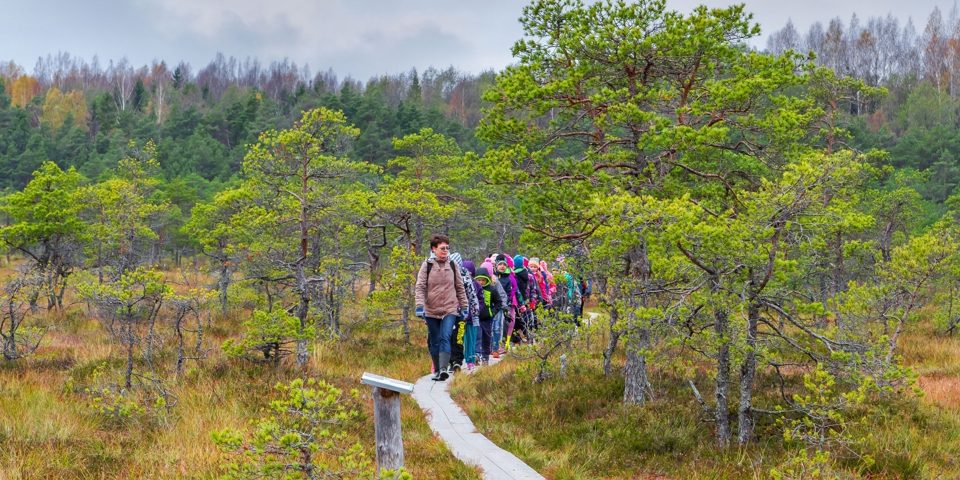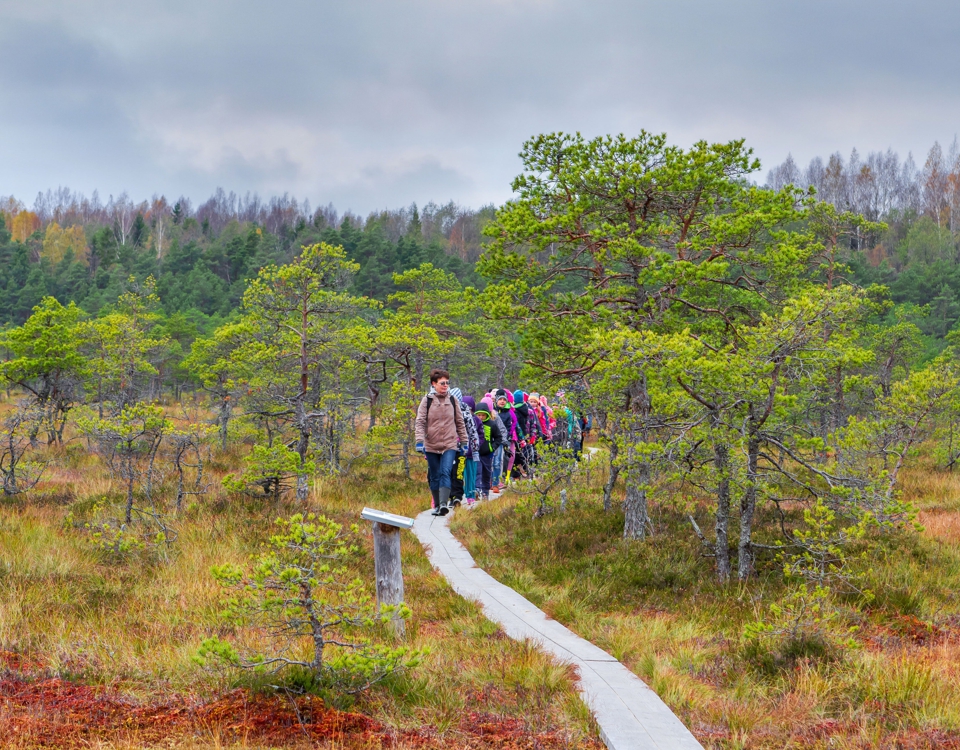Environmental education in Estonia

FCN Subgroup Forestpedagogy meets in Ljubljana
15. December 2019
Forest pedagogy in Croatian forests
6. February 2020Environmental Education in Estonia
Autor: Liisa Puusepp
Adviser for Environmental Awareness, the Ministry of Environment of Estonia
Researcher, Institute of Ecology at Tallinn University, Estonia
W hy we need to speak about environmental education? Because the global threats for humanity, the unfair distribution of resources and ensuing conflicts, and the impacts of climate change, mass-extinction of species, soil degradation and other environmental hazards are characterised as complex issues and influence all of us every day. We need do speak about these topics via forest education, global education, outdoor education etc. These are part or wings of education for sustainable development (in Estonia we use more the term “environmental education”, however, the meaning is the same) that should change our behaviour, our attitude towards the nature that keep us alive. Education for sustainable development is not about sustainable development or environmental issues. Its role is to support the understanding of world integrity, understanding both local and global systems, to enable the learner to develop holistic and critical thinking, a collaborative and empowering capacity to make sustainable decisions for himself/herself, his/her community and life on the planet.
In Estonian case, our foundation for effective environmental education is powerful, with national curricula that have the horizontal theme "Environment and Sustainable Development" since 2002, which aims to support the development of a learner to be an environmentally aware and sustainable citizen, with over 120 different environmental education centres and financing system that supports study visits of kindergartens and school groups. Unfortunately, excellent knowledge, enthusiastic teachers, and good infrastructure are not enough to make learning effective, to understand environmental issues systematically, to see sustainability as an integral part of one's everyday life and to make adjustments. Estonians know facts but do not act. Different studies are showing that.
Yes, the formal education system are doing steps, trying to be innovative in some places, daring to experiment to move towards education for sustainable development. In the case of non-formal education (environmental education centres and other institutions providing environmental education), the situation is a little more fragile at the moment. One reason is that we are used to see formal education and non-formal education as very separate entities. In addition, the myth that non-formal education is not "real" education, but rather a part of entertainment, is still prevalent. The big dream is that these two units to be organic extensions for each other. There are already actions that support collaborations and interactions and learning across different learning environments are going on more and more.
However, there are still questions in the air – is it useful to go and study in the environmental education centres, are these programs and methods effective, do children learn etc. Learning can take place when the learner is supported (let's not forget that teachers are part of the environment - like light or temperature in the room), when the learner strives to acquire knowledge, understands connections, has the opportunity to practice what he or she has learned and it has an emotional connection and a desire to contribute. This approach is called hand-to-heart approach. The most effective way to achieve it is to do it together – in collaboration between schools and non-formal education centres. Through the collaboration we can emphasize more effectively the role of the individual in the framework of sustainable development, also in the global context, because there is a widespread belief that I alone can do nothing and others are polluting at all. It all starts with myself! One more thing that is needed to remember - the word "positivity" - learning can never happen, emphasizing problems constantly, it is needed to create joy, develop harmonious relationships with other people and with nature is important.
Changing something in the educational landscape, whether in the day-to-day school system or in non-formal education, is a tanker move - it is frantically difficult to do, but its effects could be powerful and the world will be the better place.
Tasks and the structure of environmental education in Estonia
The Ministry of Environment supports Environmental Education through and together the Environmental Board, the Environmental Investment Centre and the State Forest Management Centre and collaborates with other actors in this area, particularly the Ministry of Education and Research. Additionally, the Society of Estonian Environmental Education was created in 2017 that contribute a lot to coordination and evaluation of environmental education in Estonia. The event of the year is the Environmental Education Conference that is organised by the Ministry of Environment and the Environmental Board and brings together teachers, supervisors and practitioners from Estonia to have lectures, workshops and seminars, to share best practices and to find partners, create contacts and through that change our educational system more effective.
In October 2018, the Ministry of Environment and the Ministry of Education and Research prepared a joint Implementation Plan for Environmental Education and Environmental Awareness 2019–2022. The plan was prepared jointly by two ministries, environmental institutions and NGOs, as well as representatives from municipalities and schools. The document covers formal as well as non-formal education, and awareness raising with the wider public. Additionally, it confirms who is responsible for these issues. The vision for the plan is: Estonian citizens understand that nature is the basis of culture and economy and must be treated responsibly. An environmentally conscious way of thinking and acting has become the norm in all areas of life.
Herein will be listed only few aims from the plan that are connected with non-formal environmental education:
- To analyse the participation of schools and kindergartens in environmental education programmes and projects. Seek to establish why some schools do not take part and then involve them.
- To promote trainings and courses for school teams, teachers, school leaders, environmental education centres and to create new tools, learning resources and materials for different levels of education.
- To support national and international programs that support contribution and implementation of SDGs
- Integrating environmental awareness into various development and implementation documents at national level
- Creating, implementing and analysing a non-formal environmental education quality system.
Yes, we have very good base for environmental education but we have to learn how to use it more effectively that our future generations act more sustainable way.


